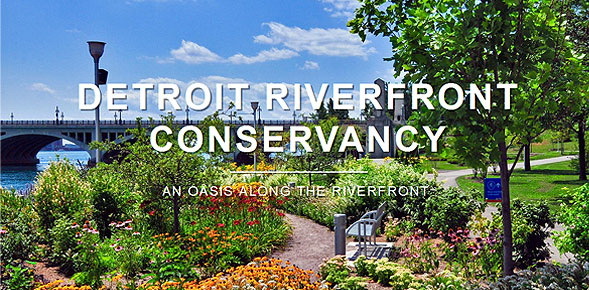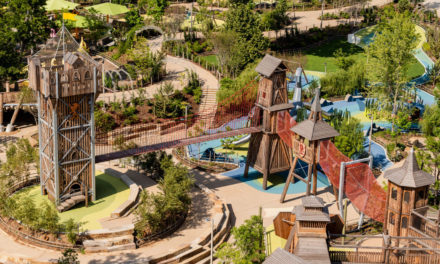 It is remarkable how Memphis has transformed its riverfront in little more than five years and how Tom Lee Park is designed to be a welcoming magnet for the community, according to Mark Wallace, President and CEO of the Detroit Riverfront Conservancy.
It is remarkable how Memphis has transformed its riverfront in little more than five years and how Tom Lee Park is designed to be a welcoming magnet for the community, according to Mark Wallace, President and CEO of the Detroit Riverfront Conservancy.
Mr. Wallace oversees the widely praised riverfront in Detroit that took 19 years for seven parks to be improved and connected into what USA Today named the best riverwalk in the U.S. in 2021 and 2022. According to the newspaper, it is “one of the city’s most exciting initiatives.”
In comparison, the concept plan by the special committee appointed by Memphis Mayor Jim Strickland for an improved riverfront was only rolled out in 2017, and by next year, the Memphis River Parks Partnership will have completed nationally important Tom Lee Park, it will have built another new park, and it will have connected about 10 other parks with a riverwalk of about six miles.
In his recent visit to Memphis, Mr. Wallace toured the riverfront parks, reviewed the plans and toured Tom Lee Park, spoke to a group at Beale Street Landing, and visited Shelby Farms Park and some music attractions in our community.
Focused On The North Star
The Detroit and Memphis riverfronts have a number of similarities but one dramatic difference.
Early in their histories, both cities turned their backs on the river and saw its value primarily for commercial uses. While Detroit’s riverbank was characterized by heavy industrial uses, Front Street in Memphis overlooked a scene of countless cotton bales, an anthill of workers and mules, and steamboats billowing black smoke as cottons were loaded and passengers were boarding.
But in one crucial way, Memphis was different. Its founders preserved the bluff for public use, which meant that costs of remediation for riverfront parks here were significantly less than Detroit’s.
When the Detroit Riverfront Conservancy was formed, Mr. Wallace said: “It was a bad time in Detroit in terms of expectations. There were episodic moments of big projects but they didn’t connect to the riverfront. There were people who said their project was going to be the game changer and nothing happened. Public confidence was in the basement.”
To deal with a jaded public, he said that everything the Conservancy did “would be done with residents of the Motor City in mind.”
“We had to be good stewards of what we built,” he said. “We had a world-class location and gathering place and incredible fresh water. The work we were doing was fundamentally about Detroit coming together and about changing people’s lives.”
Echoing themes espoused by the Memphis River Park Partnership since its formation, Mr. Wallace said the emphasis was on “a special place where everyone feels welcome. That’s our North Star.” It’s especially important in a city like Detroit that is 77% African American (Memphis is 64%).
The Tom Lee Park Bargain
In his presentation at Beale Street Landing, Mr. Wallace showed before and after photos which dramatized the impact of the Conservancy’s work so far. Next on Detroit’s agenda is construction of Ralph C. Wilson Jr. Centennial Park, which is billed as “a magnet for our entire city,” he said. Groundbreaking was in May and it will open in 2024.
The project bears similarities to Tom Lee Park improvements. In Detroit, the project will transform existing West Riverfront Park whose 22 acres were an open, uninteresting, and flat field.
When completed, it will be the Ralph C. Wilson Jr. Centennial Park, a reimagined parkland that will have cost $75 million (or $3.4 million per acre). It provides a reality check for complainers here who claim Tom Lee Park’s 30 acres costs too much at $60 million (or $2 million per acre). The Detroit Conservancy also has a significantly larger staff and a budget two times larger than its Memphis counterpart.
Mr. Wallace said the Wilson Centennial Park will feature a huge playground with Monstrum elements (which also will be in the Tom Lee Park playground), massive plantings, green space areas large enough for concerts, a beautiful canopy building, a water garden for children, and heavy landscaping.
He said: “America is going through a renaissance of public space and no one (in the media) is paying attention to it. We are designing better and with more human scale.”
Riverfronts Matter
It could not come at a better time. The work by Detroit Riverfront Conservancy and Memphis River Parks Partnership is an antidote in “an endemic of loneliness.”
Mr. Wallace said: “We go to work, we go home, we watch TV, and we go to work. People feel left out of the renaissance experiences they can’t afford. This is why these parks are so important. Parks, when compelling enough, pull people into shared common space.
“A lot of people come to our riverfront every week, some every day. Three million come every year. Once they come down, they come over and over. You can come down and enjoy it with zero in your pocket. What’s special about the riverfront is what happens there. Cities are exciting when families can make memories. That’s what happens at the riverfront.”
There are lessons for Memphis from Detroit’s two decades of riverfront work. A main one: be prepared for more visitors than you predicted.
But more than anything, the Detroit lessons were validation for what the Memphis River Parks Partnership has been doing since it was created four years ago: the importance of a park as a community gathering place, emphasis on high-quality design aimed at creating distinctive visitor experiences, messages welcoming the city in all its diversity, and a founding dedication to equity.
**
Join us at the Smart City Memphis Facebook page for additional postings.




